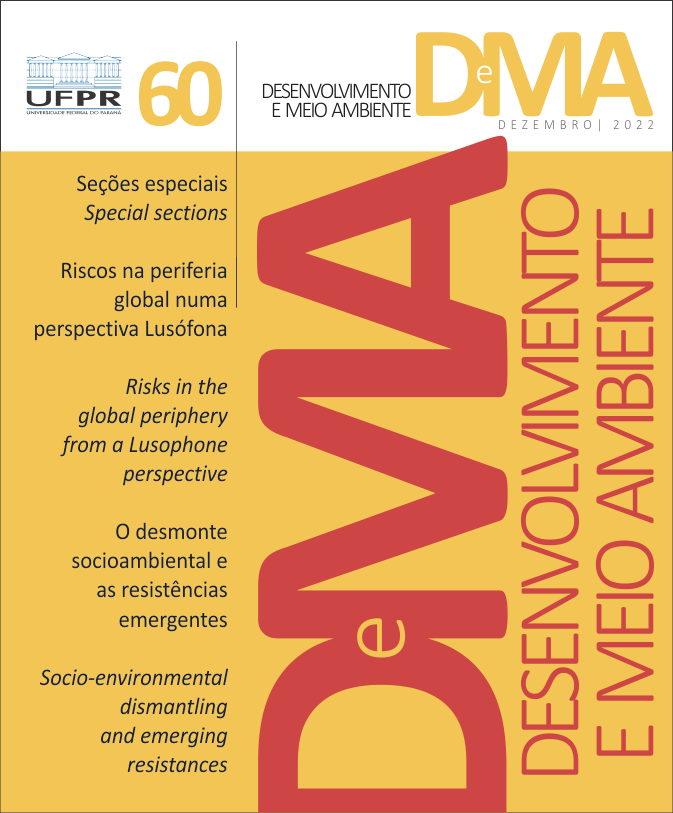Methane emissions and carbon storage from household paper disposal in Brazil during 1901-2016
DOI:
https://doi.org/10.5380/dma.v60i0.71476Palavras-chave:
decomposition, climate change, forest products, toilet paper, wasteResumo
In this paper, we estimated the methane emissions by the disposal of sanitary and domestic-use paper consumed throughout Brazil from 1901 to 2016. The apparent consumption of this type of paper from 1961 to 2016, calculated from the data of the FAOSTAT system, was used to estimate the amount of waste disposed of annually in three site categories: sanitary landfill, controlled dump, and open-air, uncontrolled dump. The 2006 IPCC Guide methodology was used to calculate CH4emissions and long-term carbon storage. Nine scenarios based upon the law that establishes the National Solid Waste Policy (NSWP) were examined, considering 100% waste disposal and treatment in landfills or incineration from 2014. The total emission was estimated at 1.967 MtCH4, corresponding to 55.080 MtCO2eq by GWP-AR5, and the stored carbon at 3.724 Mt, corresponding to 13.655 MtCO2eq. CH4emission increased beyond the population growth rate due to an increase in the per capita paper consumption in the country, from 0.02 kgCH4.year-1 in 1961 to 0.30 kg CH4.year-1 in 2016. The NSWP has not yet been accomplished, and the scenarios outlined indicate that, from the point of view of CH4 emissions, it would be more advantageous to carry out incineration instead of applying other waste treatment technologies.
Downloads
Publicado
Como Citar
Edição
Seção
Licença
Os Direitos Autorais sobre trabalhos publicados nesta revista são do autor, com direitos de primeira publicação para a revista. O conteúdo dos trabalhos publicados é de inteira responsabilidade dos autores. A DMA é um periódico de acesso aberto (open access), e adota a licença Creative Commons Atribuição 4.0 Não Adaptada (CC-BY), desde janeiro de 2023. Portanto, ao serem publicados por esta Revista, os artigos são de livre uso para compartilhar (copiar e redistribuir o material em qualquer suporte ou formato para qualquer fim, mesmo que comercial) e adaptar (remixar, transformar, e criar a partir do material para qualquer fim, mesmo que comercial). É preciso dar o crédito apropriado, prover um link para a licença e indicar se mudanças foram feitas.
Os conteúdos publicados pela DMA do v. 53 de 2020 ao v. 60 de 2022 são protegidos pela licença Creative Commons Atribuição – Não Comercial – Sem Derivações 4.0 Internacional.
A DMA é uma revista de acesso aberto desde a sua criação, entretanto, do v.1 de 2000 ao v. 52 de 2019, o periódico não adotava uma licença Creative Commons e, portanto, o tipo de licença não é indicado na página inicial dos artigos.




